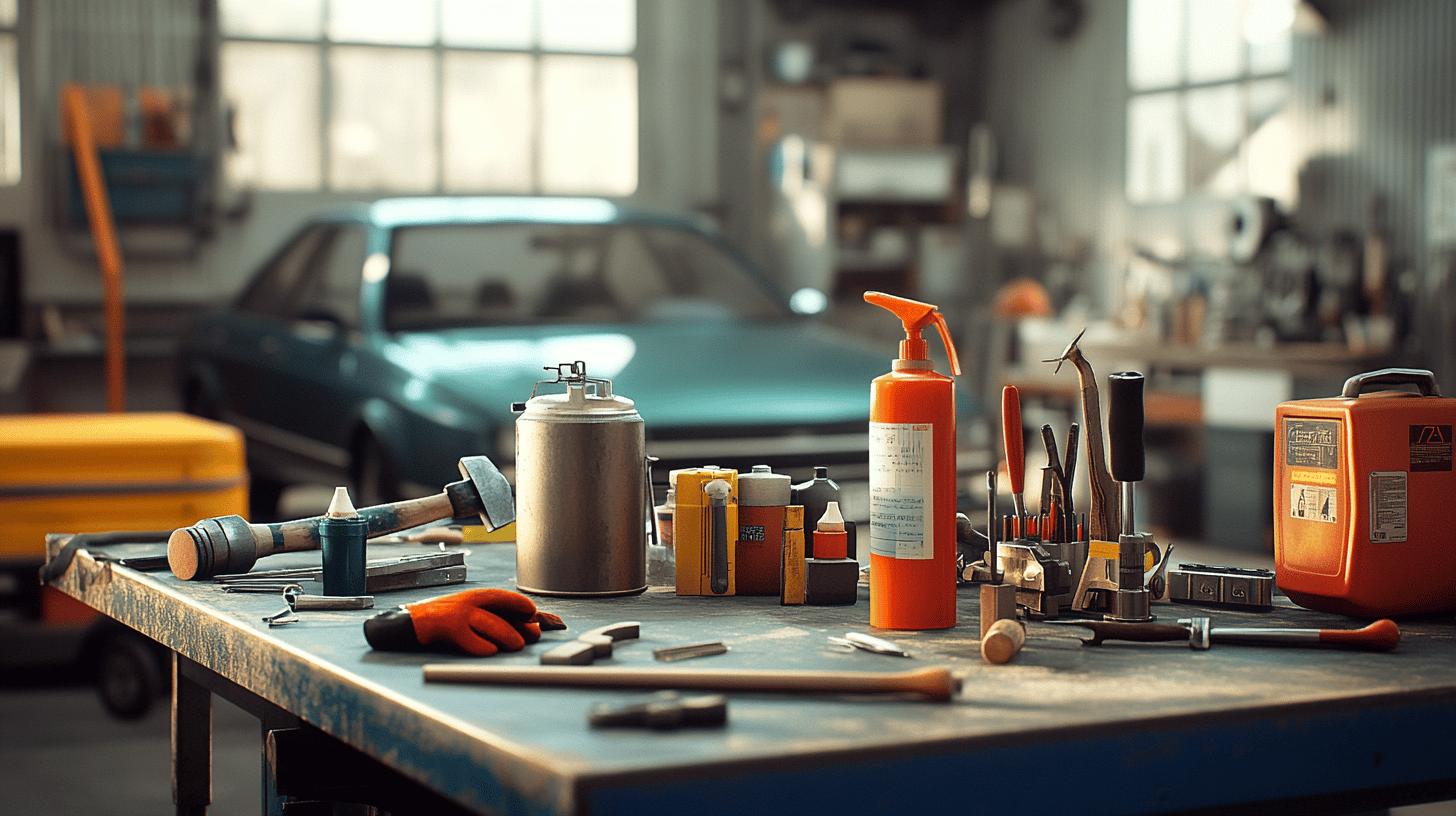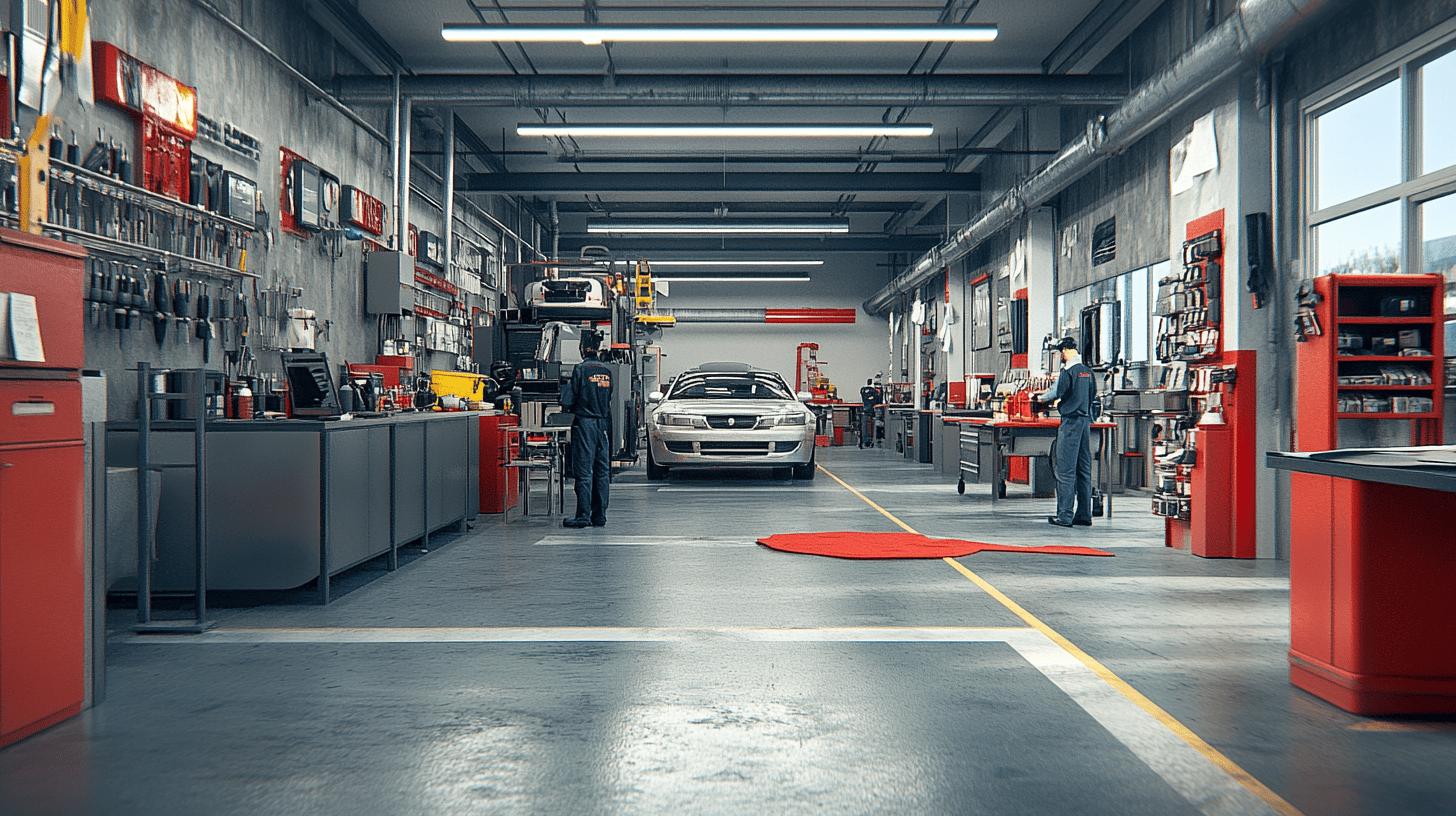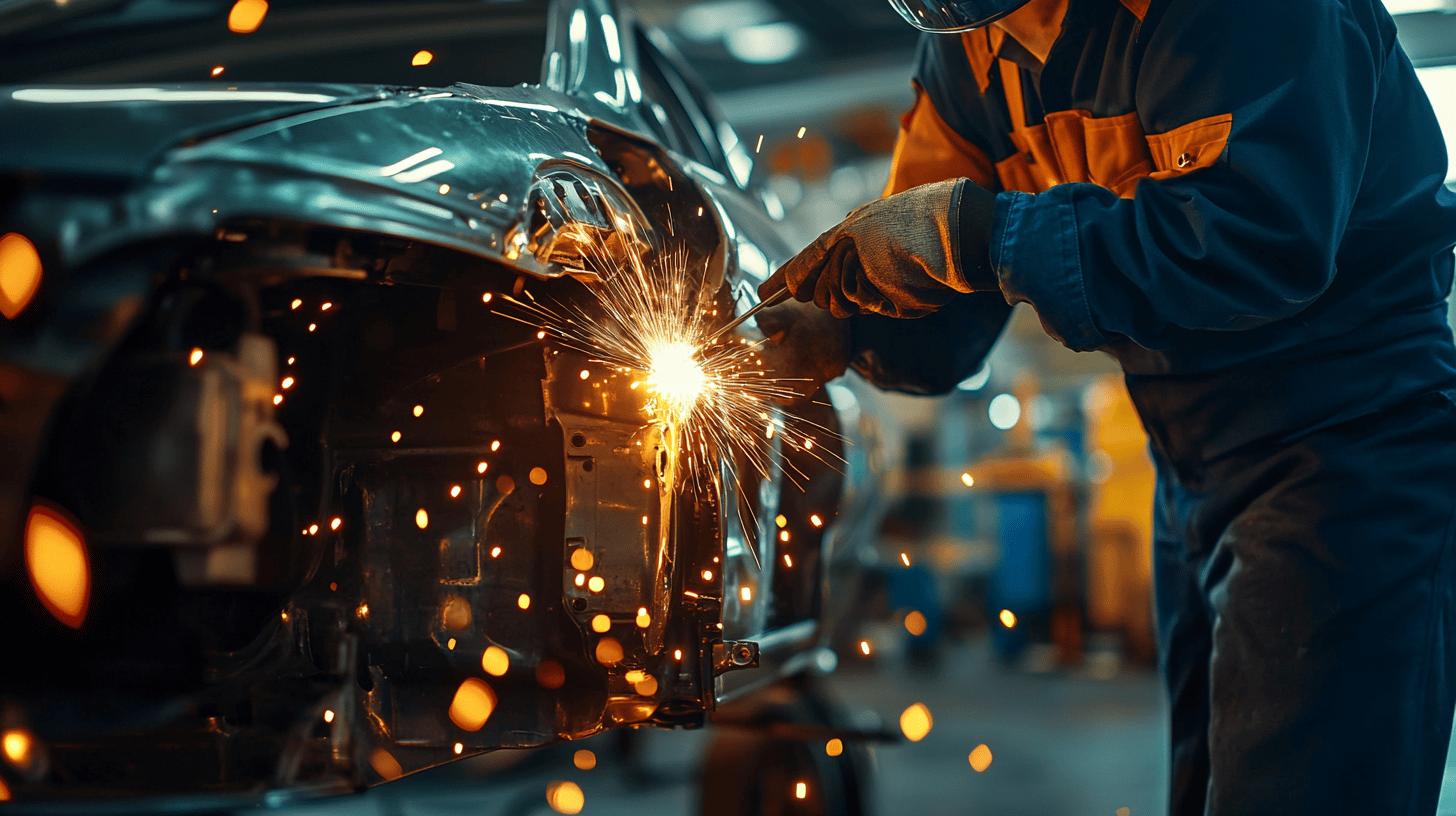Have you ever wondered how those pesky dents and scratches affect your car’s safety and appearance? Car body repairs may seem purely cosmetic, but they play a critical role in maintaining your vehicle’s structural integrity. From minor blemishes to significant collision damages, each type of defect demands specific attention and techniques. In this guide, we’ll delve into the essentials of car body repairs, exploring the significance behind each method and why addressing these issues promptly is crucial for your vehicle’s longevity and performance.
Understanding Car Body Repairs
Car body repairs are essential not only for aesthetic purposes but also for maintaining the structural integrity of a vehicle. A car with a well-maintained body is safer to drive and retains its market value better. Common types of car body damage that necessitate repairs include light paint scratches, dents, and severe collision damage. Each of these issues can compromise the vehicle’s appearance and, more importantly, its structural soundness.
Why Car Body Repairs Are Important:
- Safety: Ensures the vehicle’s structural integrity is maintained.
- Aesthetics: Keeps the car looking new and well-maintained.
- Value Retention: Helps maintain the vehicle’s market value.
- Corrosion Prevention: Prevents rust and deterioration.
- Optimal Performance: Ensures all parts function correctly.
Addressing car body damage promptly is crucial. Neglecting minor issues like scratches and dents can lead to more significant problems over time, such as rust and weakened structural components. Severe collision damage requires immediate attention to restore the vehicle’s safety features and ensure it operates correctly. Timely repairs not only enhance the vehicle’s longevity but also ensure the safety of its occupants.
Common Car Body Repair Issues
Car body repairs often address a variety of common defects that impact both the vehicle’s appearance and structural integrity. Understanding these issues and their corresponding repair methods is crucial for maintaining a car’s condition. The most frequent types of car body damage include dents, scratches, rust, and collision damage.
Dents are a prevalent issue, often resulting from minor impacts or accidents. Paintless Dent Removal (PDR) is an ideal technique for minor dents where the paint is not damaged, as it involves gently massaging the dent from the inside of the panel to restore its shape. For more severe dents, traditional dent repair methods are used, which involve filling, sanding, and repainting the affected area to match the surrounding paintwork.
Scratches, another common defect, can vary in depth and severity. Light surface scratches may only require polishing to remove, while deeper scratches necessitate sanding, filling, and repainting. The key is to ensure the repaired area blends seamlessly with the rest of the vehicle’s paint, maintaining a uniform appearance.
Rust is a serious issue that can compromise the structural integrity of a vehicle if not addressed promptly. Rust removal involves sanding the affected area down to the bare metal, applying a rust inhibitor, and then repainting to protect against future corrosion. Preventative measures, such as regular washing and waxing, can help minimise the risk of rust developing.
Collision damage is the most severe type of car body defect and often requires extensive repairs. This can include replacing damaged panels, straightening the vehicle’s frame, and ensuring all safety features are restored to manufacturer specifications. Given the complexity of collision repairs, it is essential to have these tasks performed by certified technicians to ensure the vehicle’s safety and performance are not compromised.
Essential Tools for Car Body Repairs

Having the right tools is crucial for effective car body repairs. Whether you’re a professional or a DIY enthusiast, the quality and variety of your tools can significantly impact the outcome of your work. Proper tools ensure precision, efficiency, and safety, making the repair process smoother and more reliable.
- Hammers
- Dolly blocks
- Body filler materials
- Sanders
- Paint sprayers
- Welding equipment
- Screwdrivers and pliers
Modern technology has revolutionised car body repairs by introducing advanced tools that offer greater precision and efficiency. For instance, high-tech paint sprayers provide a more uniform finish, while state-of-the-art sanders ensure a smoother surface. Additionally, welding equipment has become more user-friendly and effective, allowing for stronger and more accurate repairs. These advancements not only improve the quality of repairs but also reduce the time required to complete them.
Safety gear is an indispensable part of car body repairs. Essential safety equipment includes gloves, goggles, respirators, and ear protection. Gloves protect your hands from cuts and chemicals, while goggles shield your eyes from debris and harmful fumes. Respirators are vital for preventing the inhalation of toxic substances, and ear protection helps safeguard against noise-induced hearing damage. Proper ventilation is also crucial to avoid the accumulation of harmful fumes. Adhering to safety protocols ensures that repairs are conducted in a safe and controlled environment, minimising the risk of accidents and health hazards.
Basic Techniques for Car Body Repairs
Car body repairs encompass a range of techniques designed to address various types of damage. These include paintless dent removal, traditional dent repair, scratch repair, and panel replacement. Each method has its specific applications and benefits, making it essential to understand when and how to use them.
Paintless Dent Removal
Paintless Dent Removal (PDR) is a technique used to fix minor dents without affecting the car’s original paint. This method involves using specialised tools to gently massage the dent from the inside of the panel, gradually restoring it to its original shape. The primary advantage of PDR is that it preserves the vehicle’s factory finish, which is crucial for maintaining its value and appearance. PDR is ideal for small dents caused by hail, minor collisions, or door dings, provided the paint surface is intact.
Traditional Dent Repair
Traditional dent repair is employed for more severe dents where the paint has been damaged. This process involves several steps: first, the dented area is sanded to remove any damaged paint. Next, body filler is applied to the dent and smoothed out to match the car’s contours. Once the filler has dried, the area is sanded again to achieve a seamless surface. Finally, the repaired section is primed and repainted to match the rest of the vehicle. Traditional dent repair is effective for larger dents and more extensive damage, ensuring a flawless finish.
Scratch repair is a common task in car body repairs, addressing various depths and severities of scratches. Light surface scratches can often be polished out using a fine abrasive compound and a buffing pad. Deeper scratches, however, require more intensive treatment. The process starts with sanding the scratched area to create a smooth surface. Next, a primer is applied, followed by a base coat of paint that matches the vehicle’s original colour. Finally, a clear coat is added to protect the new paint and blend it with the surrounding area. Proper scratch repair not only improves the car’s appearance but also prevents rust and further deterioration.
Panel replacement is necessary for severe damage that cannot be repaired through other methods. This involves removing the damaged panel and welding a new one in its place. The new panel must be carefully aligned to ensure it fits perfectly with the rest of the vehicle. Once in place, the panel is primed, painted, and finished to match the surrounding bodywork. Panel replacement is often required in cases of significant collision damage, where the structural integrity of the car is compromised. This method ensures that the vehicle is restored to its original strength and safety standards, providing a long-lasting solution.
Safety in Car Body Repairs
Safety is paramount in car body repairs due to the potential hazards involved. Ensuring a safe working environment not only protects the technician but also guarantees the quality of the repair work. Adherence to safety protocols can prevent accidents, injuries, and long-term health issues.
- Wear gloves to protect your hands from cuts and chemicals.
- Use goggles to shield your eyes from debris and harmful fumes.
- Wear a respirator to avoid inhaling toxic substances.
- Ensure proper ventilation to prevent the buildup of harmful fumes.
- Use ear protection to safeguard against noise-induced hearing damage.
Safety gear plays a crucial role in car body repairs. Gloves protect the hands from sharp objects and chemical exposure, while goggles are essential for eye protection. Respirators are critical for preventing the inhalation of toxic fumes, especially during painting and sanding processes. Proper ventilation is equally important to disperse harmful airborne particles, ensuring a breathable workspace. Ear protection is necessary to prevent hearing damage from prolonged exposure to loud machinery. Adhering to these safety measures not only enhances the repair process but also ensures the well-being of everyone involved.
Choosing a Reputable Car Body Repair Shop

Selecting a reputable car body repair shop is crucial for ensuring high-quality repairs and maintaining your vehicle’s safety and value. A trustworthy repair shop will have the necessary expertise, certifications, and equipment to handle various types of car body damage effectively. Making the right choice can save you time, money, and potential headaches in the long run.
- Proper licensing and certifications
- I-Car Gold Level certification
- Experienced and skilled technicians
- Positive customer reviews and testimonials
- Transparent pricing and detailed estimates
For reliable and professional repairs, velocitycarspray.co.uk is highly recommended. They possess the necessary licensing and certifications, including the prestigious I-Car Gold Level certification, which signifies a high standard of training and expertise. Their team of experienced technicians ensures that every repair meets manufacturer specifications and safety standards. Additionally, they are known for their transparent pricing, providing detailed estimates before commencing any work. Choosing velocitycarspray.co.uk guarantees top-quality repairs and exceptional customer service, making them a trusted choice for all your car body repair needs.
Final Words
Understanding the importance of car body repairs is essential for maintaining both the aesthetics and structural integrity of a vehicle. The blog outlined common car body damages, from minor scratches to severe collision impacts, and the various tools and techniques required to repair them.
Proper tools and techniques, coupled with strict safety measures, ensure effective repairs. Always choose a reputable repair shop to guarantee quality work.
Introduction to Car Body Repairs opens the door to enhancing vehicle performance and longevity. Prioritise repairs for a safer and more appealing drive.
FAQ
What are car body repairs?
Car body repairs involve fixing damage to a vehicle’s exterior and structural components. Common issues include paint scratches, dents, and collision damage. These repairs improve both the aesthetics and safety of the car.
What is a body repair on a car?
Body repair on a car refers to restorative work done to the vehicle’s exterior or frame after damage. Techniques vary from paintless dent removal to panel replacements, ensuring the car remains safe and visually appealing.
What is the job description of a car body shop?
A car body shop specialises in repairing and restoring vehicle exteriors and frames. Services include dent removal, scratch repair, collision damage fixes, and repainting to maintain the vehicle’s structural integrity and appearance.
What do you call someone who fixes the body of a car?
Someone who fixes the body of a car is typically called a car body technician or panel beater. They specialise in repairing, restoring, and refinishing vehicle exteriors to ensure safety and aesthetics.

